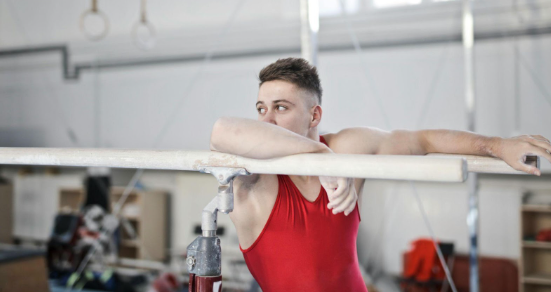An Ultimate Guide to Morning Stretches to Prevent Back Injuries
An Ultimate Guide to Morning Stretches to Prevent Back Injuries

Starting your day with the right stretches can significantly affect how you feel and move throughout the day. Stretching helps loosen muscles, boosts blood flow, and sets the body up for the day ahead. It is particularly important for preventing back injuries that can come from stiffness or poor posture.
Why Morning Stretches Matter
When we sleep, our bodies can become stiff from staying in one position for hours. Stretching first thing in the morning helps release any built-up tension and increases blood flow to the muscles. This improves flexibility and mobility, necessary for maintaining a healthy back. Incorporating a regular stretching routine into your morning can also help reduce muscle tightness, improve posture, and minimize the risk of developing back pain over time.
By stretching every morning, you take proactive steps to protect your back and improve your overall well-being. Stretching helps wake up the muscles and supports the spine, making it easier to move through daily activities with reduced risk of pain or injury.
1. Cat-Cow Stretch
The gentle cat-cow stretch prepares your spine for movement by warming it up and improving its flexibility. It helps improve circulation between the vertebrae and releases tension in the back muscles. This movement is perfect for starting your morning because it engages the entire spine.
How to Do It
- Kneel and rest your weight on your hands, aligning your wrists with your shoulders and your knees with your hips.
- Inhale deeply and, as you exhale, round your spine toward the ceiling (cat position) while tucking your chin toward your chest.
- Inhale again, returning to a neutral spine, and then drop your belly toward the floor as you lift your head and tailbone upward (cow position).
- Continue alternating between cat and cow positions for 1–2 minutes, moving at your own pace.
This stretch promotes spinal flexibility and warms up the back muscles, making it an ideal starting point for your morning routine.
2. Child's Pose
Child pose is a restorative stretch that helps lengthen the spine and release tension in the lower back. It also stretches the hips, thighs, and shoulders, making it a comprehensive stretch for the entire back.
How to Do It
- Kneel on the floor, bringing your big toes together and spreading your knees apart.
- Gently lower your hips back onto your heels, extending your arms forward on the floor.
- Slowly lower your chest towards the floor, resting your forehead on the ground.
- Maintain this position for up to a minute, breathing slowly and deeply.
- Repeat this stretch as needed to alleviate discomfort.
The gentle nature of the pose makes it a great way to relax the back muscles while easing into your morning.
3. Knee-to-Chest Stretch
The knee-to-chest stretch is simple but effective for relieving tension in the lower back. It also increases flexibility in the hip and lower back areas, which prevents injuries.
How to Do It
- Recline on your back with legs outstretched and feet loose.
- Draw one knee towards your chest, grasping it with both hands.
- Gently pull until you sense a comfortable stretch in your lower back.
- Stay in this position for 20–30 seconds, then change legs.
- For a more intense stretch, bring both knees to your chest simultaneously and hold for 15–20 seconds.
This stretch helps reduce lower back tension and prepares the spine for movement throughout the day.
4. Spinal Twist
A spinal twist is a great way to improve mobility in the spine and release lower back tension. It also stretches the muscles along the sides of your body and helps alleviate any tightness.
How to Do It
- Lay flat on your back.
- Bend your right knee and bring it across your body, letting it rest on the floor on the left side.
- Stretch your arms out to the sides and turn your head to the right.
- Hold the position for 20–30 seconds and switch to the other side.
Spinal twists help realign the spine, improve flexibility, and ease muscle tension.
5. Cobra Stretch
The cobra stretch helps strengthen and stretch your lower back and abdominal muscles. It promotes spinal flexibility and can help relieve lower back pressure.
How to Do It
- Lie on your stomach with your palms flat on the floor near your shoulders.
- Carefully elevate your upper body, keeping your hips stationary on the ground.
- Hold the stretch for 15–20 seconds and then lower yourself back down.
- Repeat 2–3 times, if needed, for added flexibility.
The cobra stretch can be especially beneficial for those who sit for long periods, as it opens up the chest and lengthens the spine.
6. Hip Flexor Stretch
Tight hip flexors can contribute to lower back pain, so incorporating a hip flexor stretch is integral. This stretch helps release tension in the hips and lower back.
How to Do It
- Kneel on one knee with the other foot planted in front, forming a 90-degree angle with your legs.
- Push your hips slightly forward while keeping your back straight.
- Hold still for 20–30 seconds, then change sides.
- Repeat if needed to release more tension.
This stretch reduces the strain on the lower back by loosening up the hip flexors, making daily movements smoother and less painful.
Benefits of a Consistent Morning Stretching Routine
Committing to a daily stretching routine comes with multiple benefits. Regular stretches help maintain muscle flexibility and support the spine. They can also improve posture, making it easier to stand and sit correctly throughout the day.
Moreover, daily stretching reduces muscle tension and the risk of
injuries, keeping your back healthy and strong. These stretches take just a few minutes and can help prevent back injuries and reduce stiffness. Prioritizing a simple morning stretch routine is a step toward a healthier and more active day.
Take control of your health with our team at
Sycamore Chiropractic and Nutrition, where we prioritize your well-being with personalized care.
Schedule your consultation today to start your journey toward a pain-free, balanced life.









